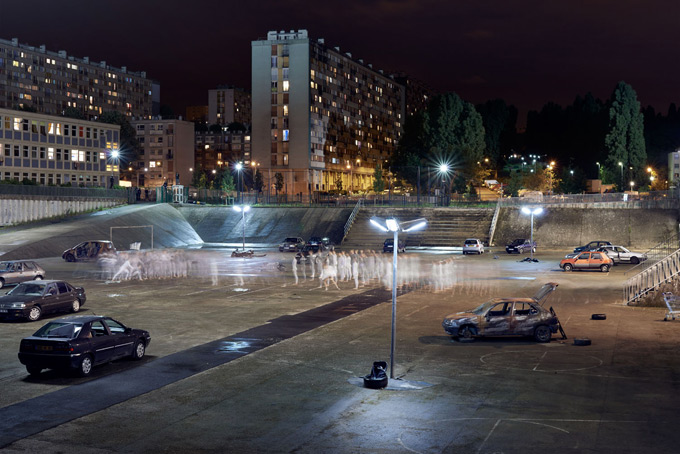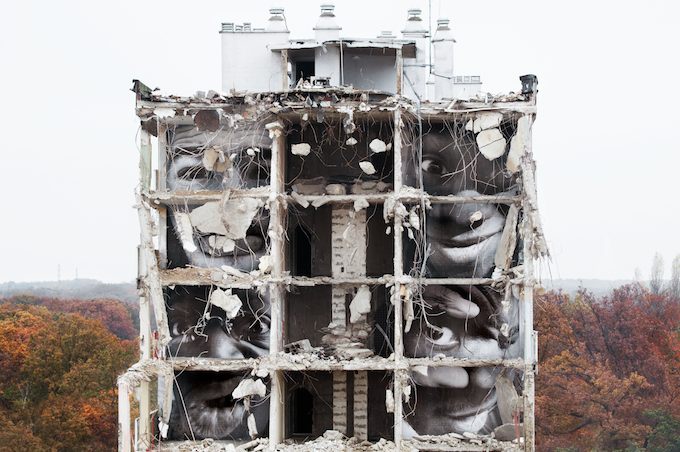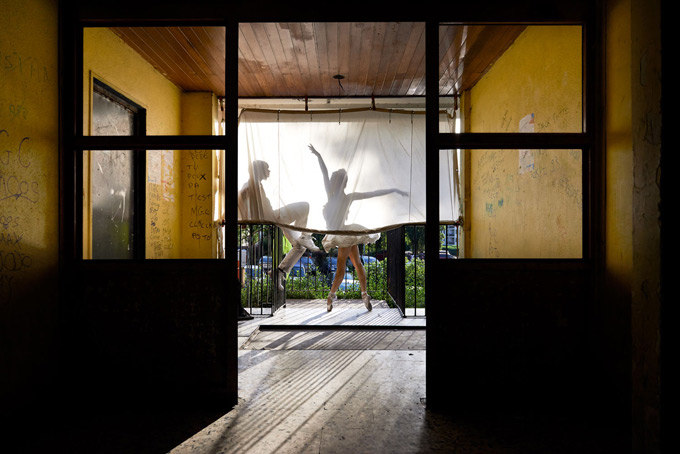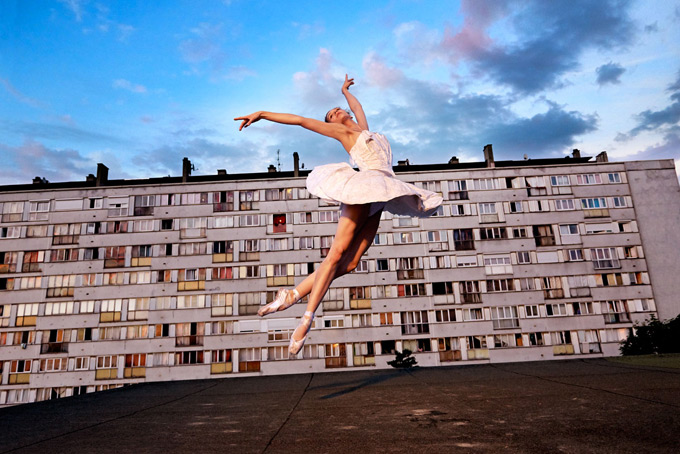About 12 years ago I met an artist named Ladj Ly through a directors’ collective in France called Kourtrajmé. We were 20 years old and both interested in representing marginalized communities through our art. Ladj was from a housing development in the Parisian suburb Clichy-sous-Bois called Les Bosquets, which translates as “the groves.” It looked nothing like a grove, however: the neighborhood was full of giant housing towers in a very stark landscape. Ladj called it “the real ghetto.” Everything was broken: the elevators in the housing projects, the lights outside. He asked me if I would like to work with him there, and he was my introduction to the neighborhood. I did not know then that we were starting what would be a ten-year project or that, the following year, the neighborhood would explode in riots.

Still from Les Bosquets (dir. JR), 2015.
At that time Les Bosquets was full of tension. Like many suburbs in France, the neighborhood is a melting pot. It was created in the 1960s to provide better conditions for immigrants. But the train line that would have connected Clichy-sous-Bois to Paris was never completed, and the suburb slowly became abandoned. The neighborhood was literally disconnected.
We made our first portraits in Les Bosquets in 2004. Ladj and I took close-up images of the neighbors there. They loved playing to the cameras, making silly faces. This was before social media made it possible for people to disseminate their own images so easily, so when we posted these portraits in Paris, we were really bringing those faces to neighborhoods where they would otherwise never be seen. We also posted the photos around Les Bosquets itself.

Still from Les Bosquets (dir. JR), 2015
In October 2005 two teenagers in Clichy-sous-Bois were being chased by the police. They hid in an electric power station, and they were electrocuted. When they died, the neighborhood erupted in riots. There were a lot of factors—the neighborhood was in very bad shape—but that was the triggering event. The riots started on the exact corner where we had placed photos a year earlier. We put some portraits on buildings that were later demolished. It was a very intense experience to see the portraits of residents being destroyed as the buildings themselves were brought down.
Ladj was living in the neighborhood during the riots, and he was filming what was happening. He documented the riots from the inside, telling the stories not just of the residents who were outraged but also of others who were trying to stop the riots and serve as mediators between rioters and police. There were other narratives beyond the one that was captured by the media. What happened there has happened, and is still happening, in many neighborhoods around the world when a city is full of tension or is deteriorating.

Still from Les Bosquets (dir. JR), 2015.
Now, almost 10 years after the riots, my new film Les Bosquets is the culmination of the work that Ladj and I started. It is also an homage to him. The film is a combination of a ballet, which tells the story of the riots through choreography, and testimony and video images from the neighborhood. The situation in Les Bosquets has changed somewhat—the run-down housing towers have been replaced—but the community is still isolated. The most significant change since we began there, however, is the control that communities have in telling their own stories and representing themselves, and the power that comes from that.
In Les Bosquets there is a character inspired by Ladj and another who plays a reporter. For most of the ballet they are clashing with each other, but ultimately they are able to engage in a dialogue. They are filming each other, using the same tool. During the riots in Les Bosquets, there was no Twitter, no Instagram—there was no easy way for people to see information from the inside. Today there are still clashes between communities and police or between citizens and governments, but people are able to document their experiences and to spread their own images. Through working with this community for 10 years, I have learned that you need both visions to see the situation clearly. The more people can express themselves, the more they can be empowered by their own images.

Still from Les Bosquets (dir. JR), 2015.

